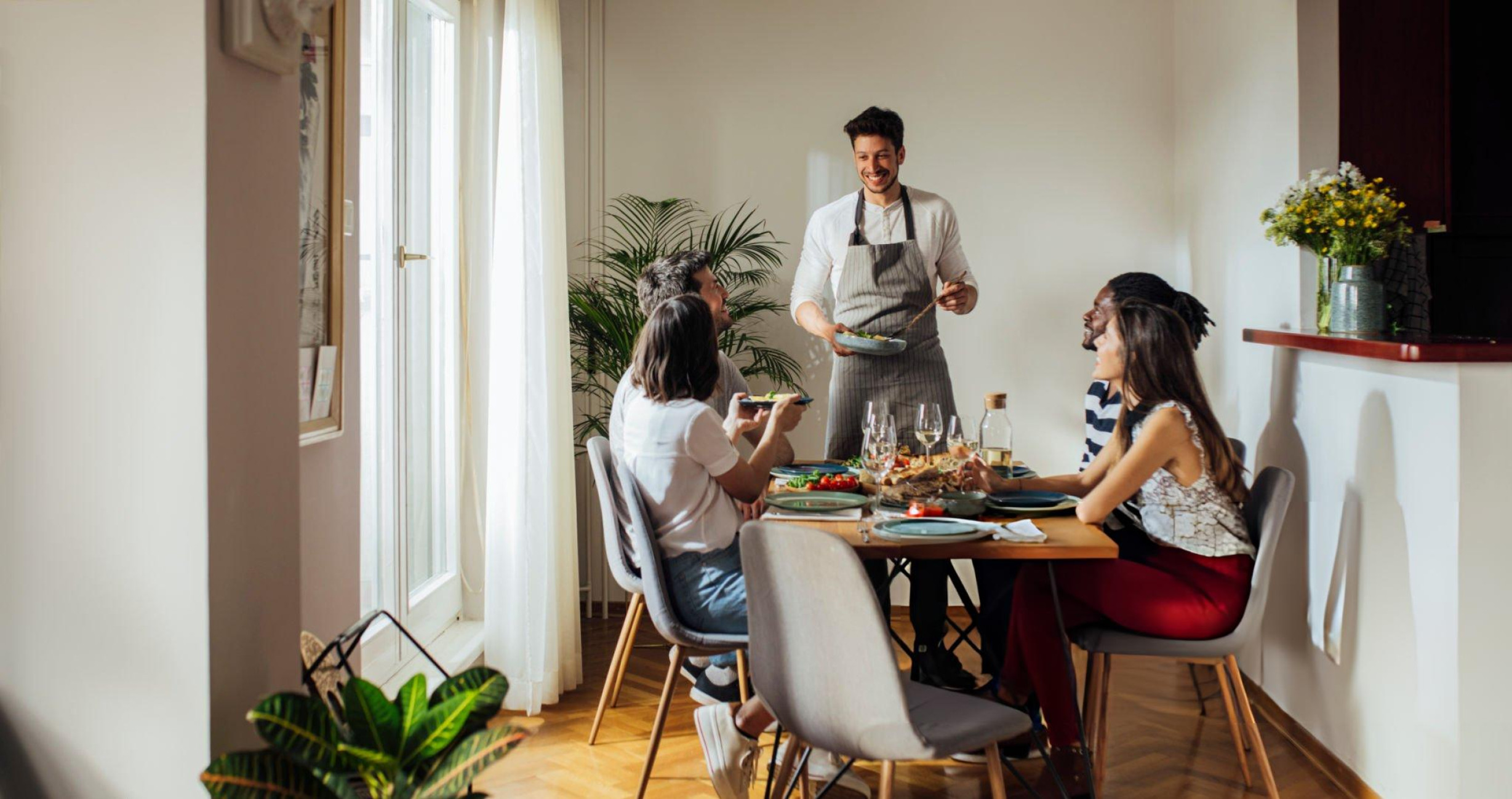How to Set Up Your Kitchen for Stress-Free Entertaining: Make Hosting a Joy, Not a Chore
Entertaining at home should be enjoyable, not stressful. Yet many hosts spend the entire party stuck in the kitchen, frantically cooking, cleaning, and managing chaos while guests mingle without them. The secret to stress-free entertaining isn’t just good recipes or perfect timing – it’s setting up your kitchen to support hosting rather than fighting against it. A well-organized, thoughtfully arranged kitchen allows you to prepare impressive meals, serve guests gracefully, and actually enjoy your own parties. With strategic planning and smart setup choices, you can transform your kitchen from a source of hosting anxiety into your greatest entertaining asset. The best part? Most of these changes require no renovation, just rethinking how you use and organize your existing space. Understanding the Entertaining Kitchen Mindset Successful entertaining kitchens function differently than everyday cooking spaces. Your daily kitchen setup prioritizes efficiency for one or two cooks preparing routine meals. An entertaining kitchen needs to accommodate multiple dishes cooking simultaneously, provide easy access for guests, and allow the host to remain socially engaged while managing food preparation. The key difference lies in workflow and accessibility. During parties, you need clear counters for serving platters, easy access to glassware and beverages, and cooking systems that don’t require constant attention. Your kitchen should allow guests to help themselves to drinks without navigating your prep area, while keeping cooking activities organized and manageable. Flexibility becomes crucial when entertaining. You might need to switch from appetizer prep to main course cooking to dessert plating all while keeping drinks flowing and maintaining conversation. Rigid, single-purpose setups create bottlenecks and stress, while flexible arrangements adapt to changing party needs throughout the evening. Visual appeal matters more during entertaining than daily cooking. Guests often gather in kitchens, making appearance and organization more important. Cluttered counters, overflowing trash, and chaotic prep areas create stress for hosts and discomfort for guests, while clean, organized spaces feel welcoming and relaxed. Creating Dedicated Entertaining Zones Successful entertaining kitchens divide space into distinct zones that serve specific functions without interfering with each other. These zones allow multiple activities to happen simultaneously while keeping the kitchen organized and the host in control. The Beverage Station represents one of the most valuable entertaining zones you can create. Designate a specific area away from cooking zones where guests can access drinks independently. Include a small table, cart, or section of counter with space for ice bucket, glasses, wine, mixers, and other beverages. This setup removes the constant interruption of “can I get you a drink” while keeping guests out of your cooking workflow. Stock the beverage station with everything needed for self-service: wine opener, bottle opener, cocktail napkins, and a small trash receptacle for bottle caps and citrus peels. Position this zone near the refrigerator if possible for easy access to cold drinks, but far enough from cooking areas that guests don’t interfere with meal preparation. The Prep Zone should be your primary workspace, equipped with cutting boards, knives, mixing bowls, and other tools needed for food preparation. This area needs good lighting, ample counter space, and proximity to the sink for washing produce and cleaning as you work. Keep this zone clear of decorative items or non-essential tools during parties to maximize usable workspace. The Cooking Zone centers around your range and oven, with pot holders, cooking utensils, and spices within arm’s reach. During parties, this becomes your command center where you manage multiple dishes simultaneously. Keep a timer visible and accessible, and maintain clear counter space nearby for hot items coming out of the oven or off the stovetop. The Serving Zone should be positioned for easy guest access without crossing into cooking areas. A section of counter, kitchen island, or nearby buffet works perfectly for holding serving platters, utensils, and dishes ready for guests. This zone transitions food from cooking to consumption while keeping serving activities separate from ongoing food preparation. The Cleanup Zone near the sink should include space for dirty dishes, trash, and recycling. During parties, this area prevents clutter from spreading across the kitchen while keeping cleanup manageable and out of sight. A designated landing spot for dirty dishes prevents them from piling up in the prep or cooking zones. Strategic Counter Space Management Clear counter space becomes precious during entertaining, and strategic management makes the difference between stressed chaos and smooth hosting. Before guests arrive, clear all counters of everyday items like appliance cords, mail, decorative objects, and anything not essential to the party. Create designated landing zones for specific tasks rather than treating all counter space as general-purpose. One area becomes the plating station where you assemble dishes before serving. Another section holds serving platters waiting to go out. A third area stages appetizers and snacks. This organization prevents the random scattering of items that creates visual chaos and workflow confusion. Utilize vertical space to maximize counter efficiency. Wall-mounted magnetic strips hold knives out of the way. Hanging racks store frequently used utensils. Tiered serving stands display appetizers while using minimal counter footprint. These vertical solutions keep counters clear while maintaining easy access to needed items. Temporary surface solutions expand workspace when needed. Rolling carts provide mobile prep or serving surfaces that tuck away when not needed. Folding tables set up near the kitchen hold beverages or desserts. Cutting boards over the sink create additional prep space during busy cooking periods. These flexible solutions adapt your kitchen capacity to party size without permanent changes. Smart Storage for Entertaining Essentials Keeping entertaining items organized and accessible reduces stress when party time arrives. Designate specific storage areas for items used primarily when hosting, grouping them logically for easy retrieval and return. Glassware Storage should include everyday glasses plus party-specific options like wine glasses, champagne flutes, and cocktail glasses. If cabinet space is limited, store seasonal or specialty glasses in bins on higher shelves, bringing them down only when needed. Keeping a variety of glass types on hand prevents last-minute scrambling when guests prefer wine over beer or vice versa. Serving Platters


